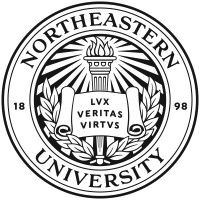Request Demo
Last update 08 May 2025
Pleckstrin homology
Last update 08 May 2025
Basic Info
Synonyms- |
Introduction- |
Related
1
Drugs associated with Pleckstrin homologyTarget |
Mechanism Pleckstrin homology modulators |
Active Org.- |
Originator Org. |
Active Indication- |
Inactive Indication |
Drug Highest PhasePending |
First Approval Ctry. / Loc.- |
First Approval Date20 Jan 1800 |
100 Clinical Results associated with Pleckstrin homology
Login to view more data
100 Translational Medicine associated with Pleckstrin homology
Login to view more data
0 Patents (Medical) associated with Pleckstrin homology
Login to view more data
697
Literatures (Medical) associated with Pleckstrin homology01 May 2025·International Journal of Biological Macromolecules
Molecular basis of two broad-spectrum antibodies neutralizing rabies virus and other phylogroup-I lyssaviruses by blocking structural transition between the pleckstrin-homology and fusion domains in the glycoprotein
Article
Author: Lin, Sheng ; Yu, Yueru ; Wang, Wei ; Ye, Fei ; Yang, Jing ; Yang, Fanli ; He, Bin ; Lu, Guangwen ; Yin, Keqing ; Cao, Yu ; Zhai, Lili ; Ye, Haoyu ; Gao, Jian ; Chen, Zimin ; Shu, Siqi ; Guo, Liyan
01 Apr 2025·Biophysical Journal
Cooperativity of PIP2 and PS lipids modulates PH domain binding
Article
Author: Baiz, Carlos R ; Hudson, Rose B ; Cardenas, Alfredo E ; Senning, Eric N ; Elber, Ron ; Chen, Xiaobing
01 Apr 2025·Development, Growth & Differentiation
Establishment and characterization of adap1 ‐deficient zebrafish
Article
Author: Kawahara, Atsuo ; Fujimaki, Saori ; Kosaki, Kenjiro ; Nishimura, Yuhei ; Yasojima, Sakyo ; Koiwa, Junko ; Ito, Hiroaki ; Yamada, Mamiko
Analysis
Perform a panoramic analysis of this field.
login
or

AI Agents Built for Biopharma Breakthroughs
Accelerate discovery. Empower decisions. Transform outcomes.
Get started for free today!
Accelerate Strategic R&D decision making with Synapse, PatSnap’s AI-powered Connected Innovation Intelligence Platform Built for Life Sciences Professionals.
Start your data trial now!
Synapse data is also accessible to external entities via APIs or data packages. Empower better decisions with the latest in pharmaceutical intelligence.
Bio
Bio Sequences Search & Analysis
Sign up for free
Chemical
Chemical Structures Search & Analysis
Sign up for free
